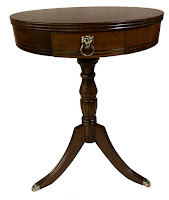 |
| Cedar Chest After |
 |
| Cedar Chest Before |
The overall condition of this cedar chest was very good, except for the back leg which needed to be tightened because it was loose. The interior was in mint condition, lined with newspapers that dated back to 1954.
The front of this cedar chest had a lovely carving which was hidden by the many years' it had been sitting in storage. It had darkened with age, therefore the lovely detail wasn't as clearly visible as it should have been. It was screaming "make me pretty again!"
The legs were quite decorative with their ball shape, lending a strong, sturdy appearance. The top was quite scratched, with a deep gouge in one area. Jim had his work cut out for him by stripping, sanding and staining this piece and attending to the loose back leg. The front decorative carving was removable, which made it more accessible to refinish, as this was done separately. He used cherry stain which lightened the entire cedar chest, therefore making the front detailed carving more visible, with a striking new appeal. Like many other cedar chests we have done, this one was unique and lovely again.
If you would like to see other cedar chests we have done, please click on the links below.
https://finalefurniture.blogspot.com/2019/11/solid-cedar-chest.html
https://finalefurniture.blogspot.com/2016/08/1948-lane-cedar-chest_22.html
https://finalefurniture.blogspot.com/2015/04/elegant-cedar-chest-revival.html
https://finalefurniture.blogspot.com/2013/12/1945-lane-waterfall-cedar-chest.html
https://finalefurniture.blogspot.com/2012/06/my-waterfall-cedar-chest.html
















































